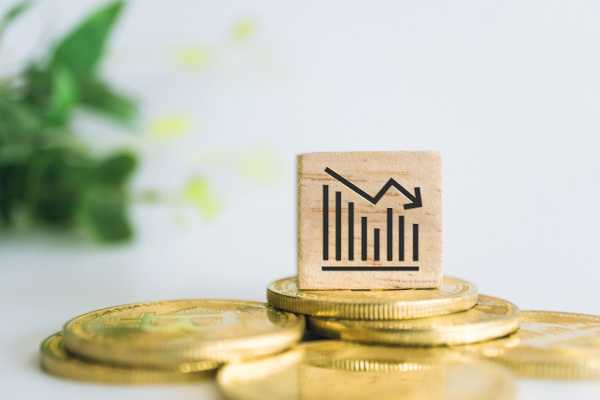What is Currency Devaluation? Why Do Some Countries Devalue their Currencies?

Devaluation, in simple terms, is when a country deliberately reduces the value of its currency. Historically, many countries across the world have devalued their currency over the years.
But why would a country devalue its currency? Let’s try to understand that with the help of an example.
Assume you own a small business delivering home-cooked meals and want to maximise profits. You want to design a rate card for your services. Your charges would be between the lowest price you are willing to provide your services at and the highest price you think customers will pay to get your services. Customers would be willing to pay an amount they can spare, so they don’t have to cook their meals.
To increase your sales, you may wish to slash your prices. In other words, you will be devaluing your currency, which could increase your sales, and more customers will be relying on your products.
Similarly, devaluation occurs when governments want to increase their trade balance. In doing so, the government adjusts its currency’s exchange rate with another country’s. The government can increase exports by making its currency cheap. Or it could be a forced act where the currency balance is disturbed because of the pegged currency experiencing an upswing. Nonetheless, the result is that after devaluation, the country would find foreign products more expensive and therefore unaffordable, leading to a fall in its imports.
What is Devaluation?
Devaluation is when countries intentionally downgrade the currency’s value with respect to foreign standards or other benchmarks. When it comes to currency devaluation, the concept is valid only for countries that peg their domestic currency to another currency by fixing the exchange rate (also called forex rate or foreign exchange rate). Such countries may use devaluation as a means to control demand and supply.
For example, the Indian Rupee is pegged to the US Dollar. When the Dollar value rises, the value of the Indian Rupee tends to fall, as is seen in recent times. The Indian rupee fell the highest against the USD to trade above Rs.80 for US$1.
What are the Reasons for Devaluation?
Devaluation occurs for three primary causes.
1. To Boost Exports
Stiff competition in the world market has led to different companies competing. For example, U.S. carmakers are competing with carmakers in Europe. Now, if the Euro gets devalued, buying cars in the U.S. that were manufactured in Europe becomes cheaper. If a currency is more valuable, the exports will become more expensive in the global markets.
2. To Narrow Down Trade Deficit
Devaluation of a currency results in an increase in the company’s exports and a decrease in imports, narrowing down the trade deficit and improving the balance of payments.
3. To Bring Down Sovereign Debt
If a country has a massive pile of fixed sovereign debt over a significant period, that may serve as an incentive to follow a weak currency policy. A weaker currency would make the payments cheaper over time if the outstanding debt is fixed.
For example, let’s suppose a government has to make interest payments worth $1 million on its outstanding debts monthly. If the domestic currency gets devalued to half, the same interest payment will be worth $50,000.
Also Read
What is Revaluation of Currency?
Revaluation can be defined as an upward adjustment to a country’s exchange rates for a chosen baseline. The baseline may comprise of foreign currency, gold prices, wage rates, etc.
In a fixed exchange rate regime, the government, such as the central bank, can adjust the exchange rates. Developing countries primarily follow this.
However, a floating rate environment can trigger revaluation regularly.
Which Countries Have Devalued their Currencies?
The most devalued currency in the world is the Colombian peso against the Dollar, which has accumulated a 13.61% depreciation this year. Next in line is the Turkish lira, which slid by 13.59%, followed by the Argentine peso, which was devalued by 13.27%.
India has also devalued its currency. The exchange rate in 1947 was 1 USD to 1 INR. A conscious devaluation of rupee was previously observed in three instances in 1949, 1966, and 1991.
China has also been devaluing its currency to increase its GDP. In 2016, China was said to be devaluing its currency to reevaluate it after the 2016 US presidential election. However, in response to their plan, President Donald Trump imposed tariffs on Chinese goods such that the value of their currency would increase against the US currency.
Why Might a Country Choose to Devalue its Currency?
Countries may choose to implement currency devaluation for multiple reasons, such as:
- Exports get more competitive in the international markets. A country benefits when its exports are greater than the imports.
- Greater demand from international markets gives a boost to the domestic economy. It increases domestic employment opportunities leading to an increase in income.
- If the demand for imports is elastic, devaluation causes a dip in demand for foreign goods since these would appear more expensive. As a result, the company gets more local customers as more people would be willing to consume indigenous goods instead of imported goods.
What are the Major Disadvantages of Devaluation?
There may also be significant downsides to devaluing a currency. A study of the adverse effects of devaluation of currency is highlighted below.
1. Inflation
Devaluation of currency leads to an increase in prices over a period as imports become more expensive and demand for indigenous goods rises, which could increase the prices. In addition, as exports become cheaper, manufacturers have lesser incentives to trim costs, which could also lead to rising costs over time.
2. Narrows Down Purchasing Power for Foreign Activities
After a company devalues its currency, its citizens may find it expensive to indulge in activities such as foreign travel and tourism or avail goods and services from foreign entities.
3. Negative Investor Sentiments
Devaluation may also induce negative sentiments for international investors and might scare them off. Investors may be less willing to hold government debt as devaluation may reduce the actual value of their investments.
Limitations of Currency Devaluation
Here is a study into the limitations of currency devaluation
1. Currency Wars
Countries seeking to devalue their currencies to gain competitive advantage can lead to currency wars.
As one country becomes more competitive by resorting to devaluation, the other country becomes less competitive. They may also be inclined towards weakening their currency. As a result, competitive devaluation may arise wherein each country races to reduce the value of its currency, leading to instability.
2. Increase in Debt Burden
Many developing countries have foreign currency loans. If these loans are priced in home currency, currency devaluation may lead to an increase in the debt burden. Moreover, if the country cannot service its debts, it creates a negative image among investors.
What is the Difference Between Devaluation, Depreciation, and Deflation?
Devaluation occurs when countries deliberately weaken their currency, and the central bank controls the exchange rate. In the international market, many currencies are not pegged to another currency. Instead, the markets determine their value. These are also termed floating exchange rates.
Due to underlying market forces, the demand for a specific currency may change relative to another currency. When a floating currency loses its value relative to another currency, it is termed depreciation. However, if the value of the floating currency goes up, it is called appreciation.
Markets exhibit a general tendency for prices to increase over a period. If the reverse happens and prices decrease over a period, it is called deflation. Deflation is uncommon and may occur only in periods of a deep recession.
Devaluation and depreciation indicate how affordable the foreign products are, whereas deflation occurs entirely in the country’s economy. However, if a currency’s value changes domestically, it may alter the exchange rate and vice versa.
Final Word
Devaluation of currency means a downward adjustment to a country’s currency with respect to foreign standards or currencies. Countries devalue their currencies to reduce trade deficits, lower the cost of debt, increase exports and decrease imports. However, devaluation can create tensions in the international markets and foster global uncertainty.
FAQs
Ans. Yes. Devaluation can boost exports by making them cheaper and can decrease imports by making them costlier, thereby achieving a balance of trade.
Ans. Yes. Devaluation may be forced on a country when it cannot defend its exchange rates any longer.
Ans. Economists believe deflation is far worse than inflation since it is usually accompanied by a decline in aggregate demand, investments, collective wages, and employment.
Disclaimer
This article is solely for educational purposes. Navi doesn't take any responsibility for the information or claims made in the blog.

Customer’s Feedback
No comments found.10 Best Bank for Savings Account in India [Highest Interest Rate 2023]
Savings account is a type of financial instrument offered by several banks. It lets you safely depo... Read More »What is Issuer Identification Number (IIN)- Working and Importance
What is an Issuer Identification Number (IIN)? Banks and financial institutions assign a distinc... Read More »What is a Vostro Account – Meaning, Working and Difference
What is a Vostro Account? A Vostro account is a bank account held by a domestic bank on behalf o... Read More »What is a Solvency Certificate? – Format, Documents Required & How to Apply Online?
What is a Solvency Certificate? A solvency certificate is a legal document furnishing the detail... Read More »What is Merchant Banking – Services, Features, Functions and Example
What is Merchant Banking? Merchant banking is a set of select banking and financial services off... Read More »Automated Clearing House: Objectives, Types and Process
Automated Clearing House is an electronic fund transfer network that manages automatic and direct... Read More »How to Redeem Credit Card Reward Points ?
Credit Card Reward points are types of incentives that customers receive when they use a credit car... Read More »What is Electronic Clearing Service (ECS) in Banking and How does it Work?
What is Electronic Clearing Service (ECS)? Electronic Clearing Service (ECS) is a method of elec... Read More »What are Credit Card Validators and How to Use them?
What is a Credit Card Validator? A credit card validator is a tool that checks the validity of a... Read More »What is Cash Management and How Does it Work?
Managing available capital can make sure that a small business stays afloat. Cash management is an ... Read More »What are Prepaid Expenses? – Definition, Examples, and Journal Entry
Prepaid expenses represent payments made in advance for products or services expected to be incurre... Read More »Increase Credit Card Limit – Important Tips and How to Do It?
The credit card limit is the maximum amount of money you can spend using your credit card. Your cre... Read More »Top 10 Chit Fund Schemes in India in 2023
Chit funds are one of the most popular return-generating saving schemes in India. It is a financial... Read More »10 Best Gold ETFs in India to Invest in April 2023
Gold ETFs or Gold Exchange Traded Funds are passively managed funds that track the price of physica... Read More »10 Best Demat Accounts in India for Beginners in 2023
Creation of Demat accounts revolutionised the way trades were conducted at the stock exchanges. It... Read More »20 Best Index Funds to Invest in India in April 2023
What is an Index Fund? An index fund is a type of mutual fund or exchange-traded fund (ETF) that... Read More »Best Arbitrage Mutual Funds to Invest in India in April 2023
Arbitrage funds are hybrid mutual fund schemes that aim to make low-risk profits by buying and sell... Read More »10 Best SIP Plans in India to Invest in April 2023
What is SIP? SIP or Systematic Investment Plan is a method of investing a fixed amount in ... Read More »10 Best Corporate Bond Funds in India to Invest in April 2023
Corporate bond funds are debt funds that invest at least 80% of the investment corpus in companies ... Read More »10 Best Bank for Savings Account in India [Highest Interest Rate 2023]
Savings account is a type of financial instrument offered by several banks. It lets you safely depo... Read More »































